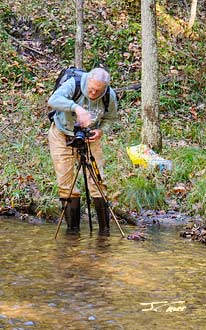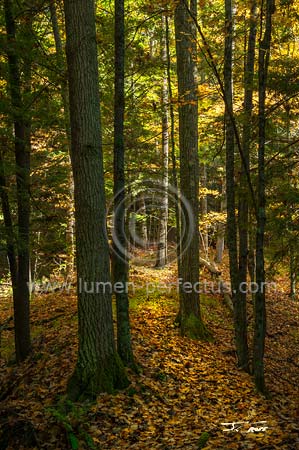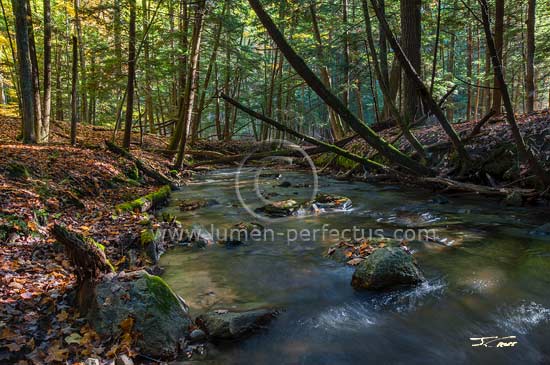www.lumen-perfectus.com
Nikon vs. The World
“Buying a Nikon doesn't make you a photographer. It makes you a Nikon owner.”
Anonymous
I've used Canon camera bodies, lenses, and various accessories since 1998. My wife and I went to Alaska in the summer that year, a trip we hoped would have a number of Kodak moments. I had a closet full of seldom-used photo gear, mostly from Topcon, dating back to the early 1970s. An update long overdue, I did the usual research, visited camera stores (back then most cities had one or more decent brick-and-mortar camera shops), talked to people, and made the decision to buy a Canon EOS A2e (EOS 5 outside the U.S.) and a couple of low-end Canon zoom lenses. It could easily have gone the other way. I seriously considered the Nikon N90, but for reasons I don't recall now, the A2e won out. The Canon experience hasn't been perfect, and I came close to switching to Nikon in December of 2012, but I've not regretted my choice. People often stick with a brand for years, lifetimes, even, because they've made a significant investment over the years in lenses for that brand. That's true for me, too, although my kit is quite modest, with only two lenses and a teleconverter to replace if I changed brands.
As of autumn, 2013, I'm delighted with my Canon EOS 5D MarkIII. It's a joy to use. The image quality (IQ) is excellent, especially when coupled with my Canon EF24-70mm F/2.8L II USM. The system functions as all creative tools should: its use is transparent in that I don't have to think about the machinery, leaving me free to concentrate on making pictures, rather than on using the camera and lens.
Traveling Light
In early October, 2013, my wife and I visited family and friends in Ohio for a few days. We continued our trip by going to west-central Michigan where my wife's sister and her husband live. I wrote about doing a little photography work there last year, during a similar visit. However, in 2012 I had my own gear. This year the trip would be somewhat shorter. Our plans allowed little time for photography. Steve had mentioned a week or so prior to the trip that the fall color lacked vibrance this year, perhaps because it had been an extremely dry summer. I decided it would be too much trouble to fly with my gear for what would be only a few hours of photo time.
Planning instead to use one of my brother-in-law's Nikons, I took only a couple of CF cards, neatly avoiding the hassle of stuffing my heavy photo pack into jammed overhead bins on the airplanes. Steve has used Nikon gear for many years. His history of DSLRs started with the D50 (through today with a D800), and dates back farther to include a couple of film Nikons. He also keeps a number of Nikon lenses, including a pair of zooms with focal lengths similar to mine.
Culture Shock

Steve standing in Betts Creek with his D800.
I didn't do any homework on the Nikon D700 I'd be using. Coupled with Steve's Nikon 24-85mm f/2.8-4 AF-D NIKKOR, I knew I'd be working with something much like my last camera and lens (now sold), Canon's EOS 5D (12.8 megapixel full-frame sensor, similar to the D700) and Canon's EF USM 24-85 F/3.5-4.5 lens. It seemed fair to assume IQ would be similar. Both are (were) good cameras, both were average, low-end lenses.
What I'd not expected is the radical differences in using the Nikon gear. Nearly everything about the body and the lens is, for lack of a better term, backwards! Imagine trying to operate a camera and lens while viewing them in a mirror, or suddenly being forced to do everything with your non-dominant hand. “Awkward and confusing” describes the situation.
Because of limited field time, and because the shooting conditions changed rapidly on this sunny morning in very dark woods, I spent no time delving into the Nikon's menus. This being a borrowed camera, I didn't feel comfortable making changes to its setup. The one exception to that: adjusting the eyepiece diopter setting, necessary because I couldn't read the finder's information displays, let alone judge image focus. I “suffered” with the camera for the first half-hour of use because that adjustment has a locking feature, unknown to me (Canon's doesn't lock, and it's never moved itself out of adjustment) and not obvious. It's an easy adjustment once one figures out how to unlock it! I'd have simply asked Steve how to change it, but we were often some distance apart in the woods.

Morning light casts a path through deep shade near Bett's Creek.
The camera had its auto-focus “attached” to the shutter release, the default setting in most cameras. In my opinion this slows down the focus-and-then-(re)compose process. I made a number of poorly focused, or focused on the wrong object, images because I used the camera's back-panel AF-start button to focus, as is my habit with my own camera. I then recomposed and made the shot without realizing the camera refocused when I pressed the shutter release. Once I discovered that, I worked around it. I never discovered how to lock focus, or to manually select the desired focusing point in the viewfinder, something I do routinely when shooting with my camera.
When manually focusing, I learned the focusing ring turns clockwise (from the rear) toward infinity. This is the opposite direction of any lens I've ever used. The zoom ring turns clockwise to increase the focal length, also the opposite of what I'm used to.
In aperture-priority shooting mode (Av), which I typically use when fully-manual exposure isn't needed, I found the dial to increase or decrease exposure compensation turned in the opposite direction from what felt natural. The layout of the display for this in the viewfinder made the unfamiliar control seem even more awkward.
I could go on with more examples. I felt silly; it was humbling. I thought I knew how to do this stuff! But the exercise was fascinating, making clear once again that in photography, one can't separate the art from the technology.
Means to an End
Am I Nikon-bashing? Not for a second. In the nearly three hours of sunny morning Steve and I wandered in the very dark, very wet woods around Betts Creek, I had a wonderful time. The “oddness” of the Nikon gear was a part of that; I'm happy to have had the experience. I threw away a lot of exposures, but in the end I had two keepers. That's my typical yield on a good day with my own, comfortably familiar equipment.

Last photo of the day: Morning light on Bett's Creek. To capture the image in this difficult lighting (perhaps a 12-stop range) I made five exposures to combine into a high-dynamic-range (HDR) picture.
Thank you to Steve (who's one of my three regular readers) for trusting me with his gear.
I know I could have adjusted the D700's settings to eliminate several of the annoyances. But as mentioned, it seemed inconsiderate to mess too much with a borrowed camera, and I really didn't have the time (or motivation) for it. Had I used the camera and lens for a couple of days (OK, maybe a week), I'd have become comfortable with it. I've no doubt a long-time Nikon user (say, Steve) would have felt exactly the same if handed a Canon system to use, for the first time, for a few hours.
Nikon vs. Canon, perhaps even Nikon vs. every other camera maker, is simply part of life's dichotomy. Us vs. Them. I wrote about this a couple of years ago in an article for this site. It's still true.
October, 2013
The Monthly Disclaimer:I'm sorry about the big © in the middle of the pictures. I hate doing this, and dislike the mess it makes of the image. But I constantly find my pictures all over the Web, often using my bandwidth to display them. There's very little that can be done to stop this violation of my copyright, but I've found when I insert the watermark, the images are virtually never stolen.